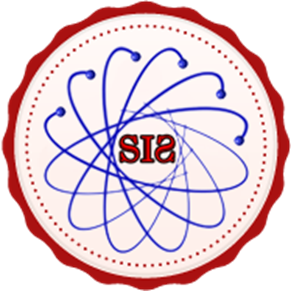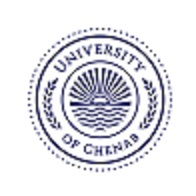Copyrights/Licensing
What is copyright?
As soon as an idea is expressed in a physical medium, such as writing a paper, it qualifies for copyright protection. Copyright is a legal right that gives the copyright holder exclusive rights over how others use their work. The level and type of protection offered by copyright vary between countries.
A form of intellectual property, copyright can be dealt with like other types of property – it can be acquired, disposed of or licensed. Copyright is time-limited. The period of protection varies, but in most countries, a journal article created at the present time will be protected for between 50 and 70 years from the death of the last surviving author.
By means of a number of local and international laws and conventions, copyright that arises in one country is recognized and protected in many others. Treatment of copyright in the digital environment is evolving at an unprecedented rate. Copyright exists to protect the rights of an owner of an original piece of work by imposing restrictions on reuse, but it does not always fit well with how we use and share information in the digital sphere. The growth of open access publishing has also added to the challenge as the right to reuse as well as read content has been emphasized.
Who owns the copyright in an article?
The author(s) of an article will be the first owners UNLESS the paper was written in the course of employment, i.e. as part of their normal, paid duties for their employer, in which case in many countries the employer will be the copyright owner. The output of government employees may be subject to different legislation depending on their country of origin.
Copyright at IJIMS
IJIMS journals have Open Access policy. This means all articles are immediately available to read and reuse upon publication. Articles in IJIMS can be downloaded, shared, and reused without restriction, as long as the original authors are properly cited.
IJIMS applies the Creative Commons Attribution 4.0 International License to articles and other works we publish. If you submit your paper for publication by IJIMS, you agree to have the CC BY license applied to your work. Under this Open Access license, you as the author agree that anyone can reuse your article in whole or part for any purpose, for free, even for commercial purposes. Anyone may copy, distribute, or reuse the content as long as the author and original source are properly cited. This facilitates freedom in re-use and also ensures that IJIMS content can be mined without barriers for the needs of research.
Content Owned by Someone Else
If your manuscript contains confidential information or content such as photos, images, figures, tables, audio files, videos, proprietary protocols, code, etc., that you or your co-authors do not own, we will require you to provide us with proof that the owner of that content (a) has given you written permission to use it, and (b) has approved of the publication of such information or content under the CC BY license. Under no circumstances should your manuscript contain third party trade secret information.
If you do not have owner permission, we will ask you to remove that content and/or replace it with other content that you own or have such permission to use.
Don't assume that you can use any content you find on the Internet, or that the content is fair game just because it isn't clear who the owner is or what license applies. It's up to you to ascertain what rights you have—if any—to use that content.
Using Article Content Previously Published in Another Journal
Many authors assume that if they previously published a paper through another publisher, they own the rights to that content and they can freely use that content in their paper, but that’s not necessarily the case it depends on the license that covers the other paper. Some publishers allow free and unrestricted re-use of article content they own, such as under the CC BY license. Other publishers use licenses that allow re-use only if the same license is applied by the person or publisher re-using the content.
If the paper was published under a CC BY license or another license that allows free and unrestricted use, you may use the content in your IJIMS paper provided that you give proper attribution.
If the content was published under a more restrictive license, you must ascertain what rights you have under that license. At a minimum, review the license to make sure you can use the content. Contact that publisher if you have any questions about the license terms – IJIMS staff cannot give you legal advice about your rights to use third-party content. If the license does not permit you to use the content in a paper that will be covered by an unrestricted license, you must obtain written permission from the publisher to use the content in your paper. Please do not include any content in your paper which you do not have rights to use.
Removal of Content Used Without Clear Rights
IJIMS reserves the right to remove any photos, captures, images, figures, tables, illustrations, audio and video files, or other confidential or proprietary content, from any article, whether before or after publication, if concerns are raised about copyright, license, or permissions and the authors are unable to provide documentation confirming that appropriate permissions were obtained for publication of the content in question under a CC BY license.
License
Licenses allow the owner of copyright to grant and impose conditions on the reuse of content. As a result of the growth of open access publishing, standard form licenses have attracted significant attention, especially as many funders are mandating that specific licenses be used by publishers when publishing work funded by them (for example, the Research Councils UK have expressed a preference for a CC BY license for gold open access publishing).
What is a Creative Commons license?
Creative Commons (CC) provides free and easy-to-use copyright licenses giving the public the right to share, use, and even build upon an author’s creative work. The non-profit organization CC also protects the people who use an author’s work, so they don’t have to worry about copyright infringement as long as they abide by the specified conditions. Licensing IJIMS articles under a Creative Commons license has evolved as the standard for IJIMS publishing. One of the most liberal CC licenses for publishing scientific articles is the Creative Commons Attribution (CC BY) license, as it allows the public to adapt and share an author’s work, even for commercial use, as long as the author is properly cited.













